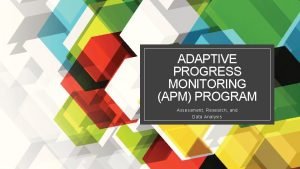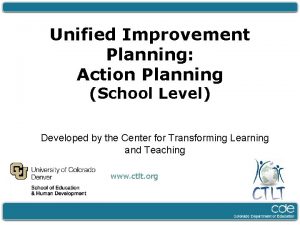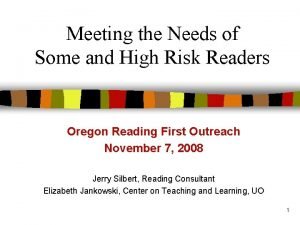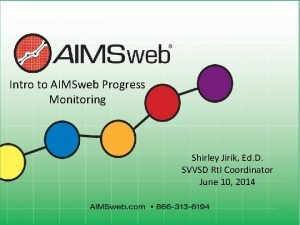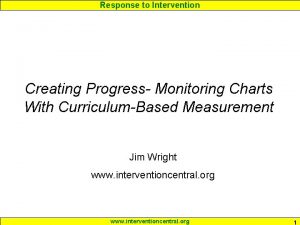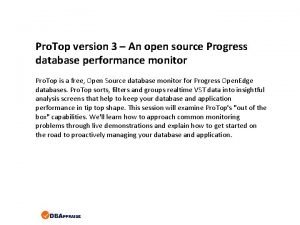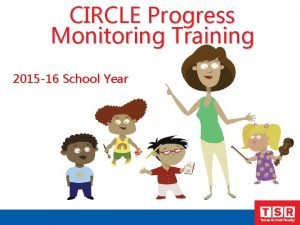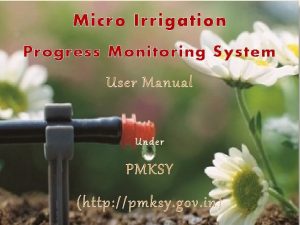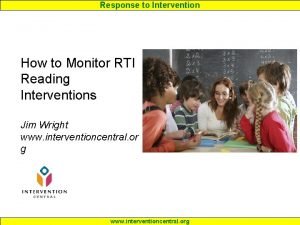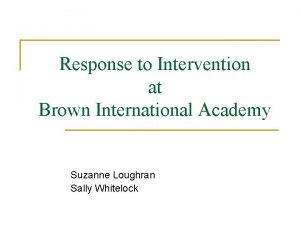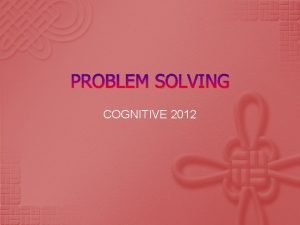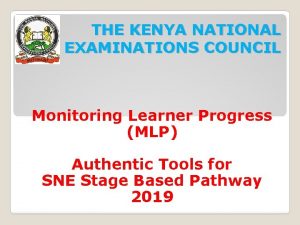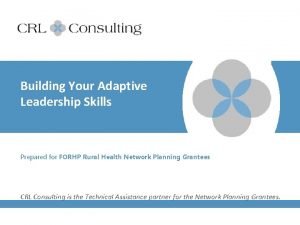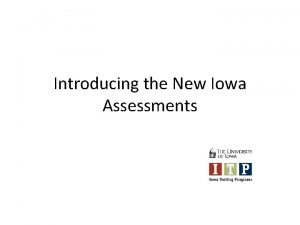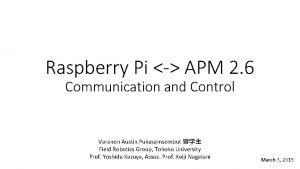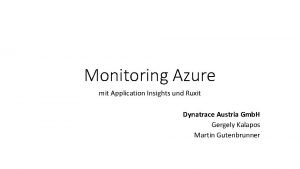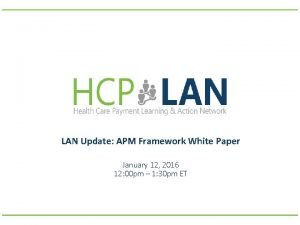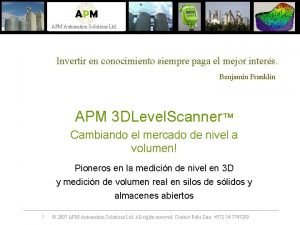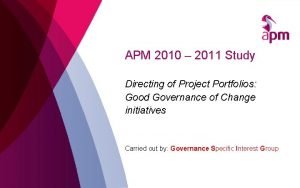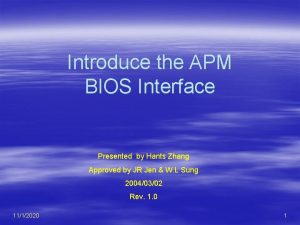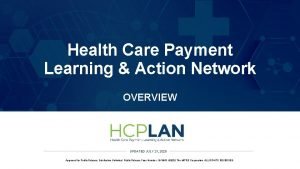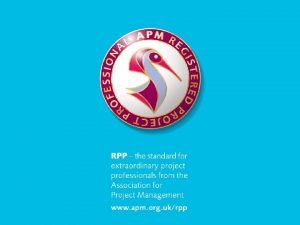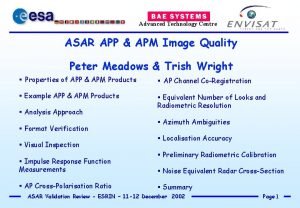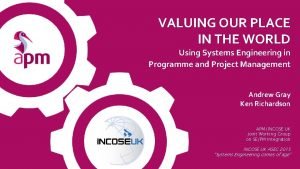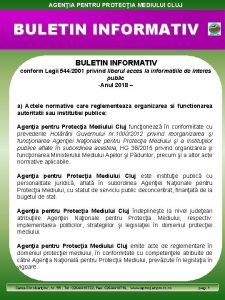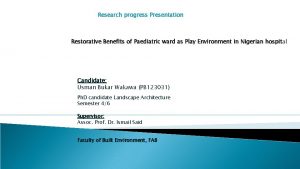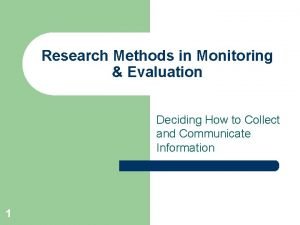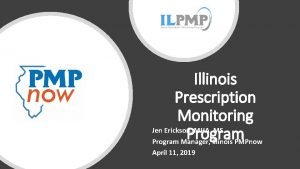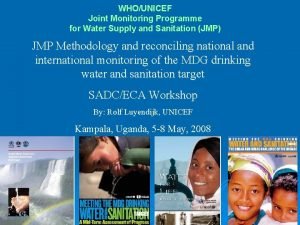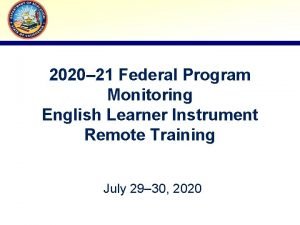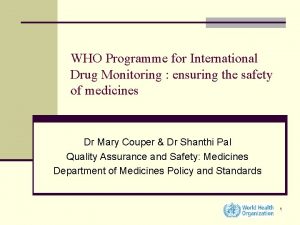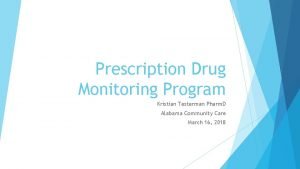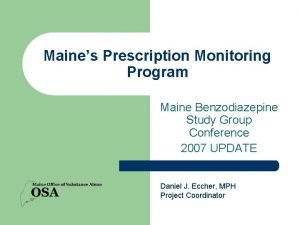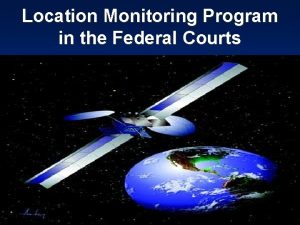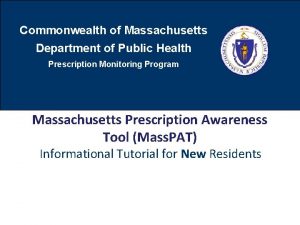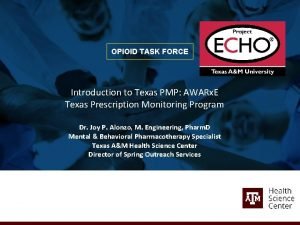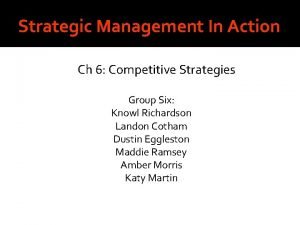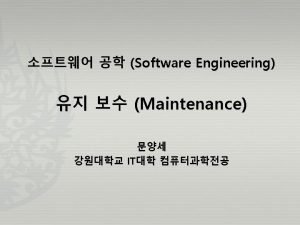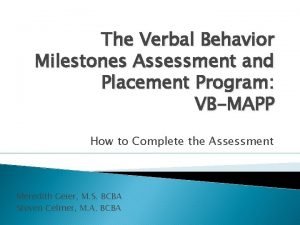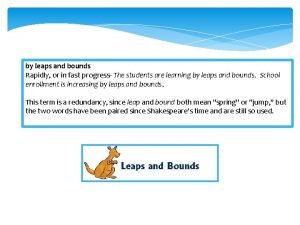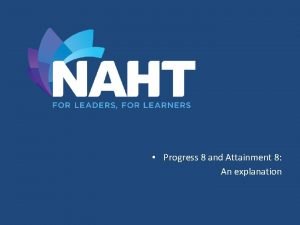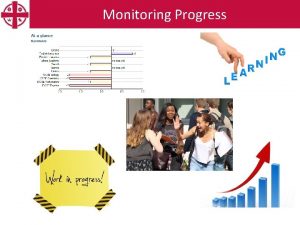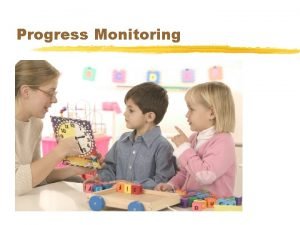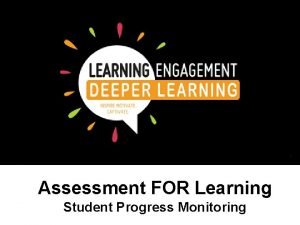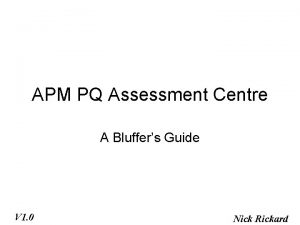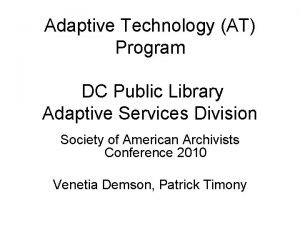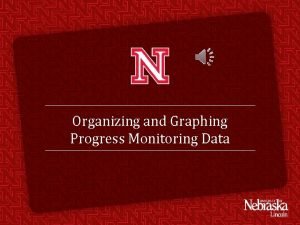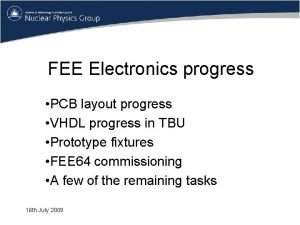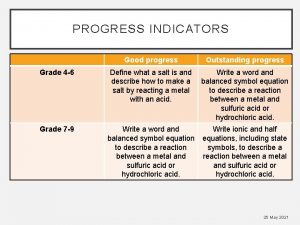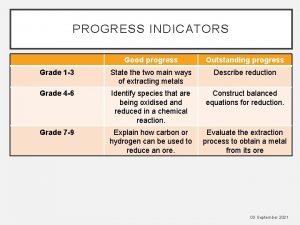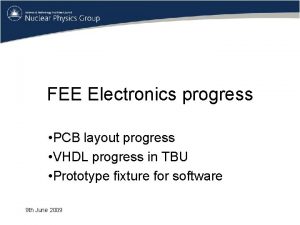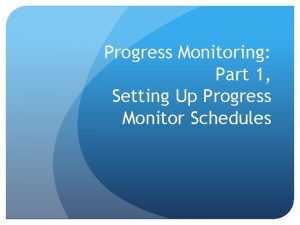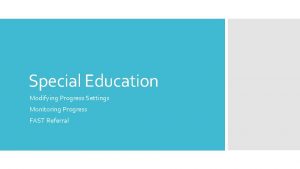ADAPTIVE PROGRESS MONITORING APM PROGRAM Assessment Research and





























































- Slides: 61

ADAPTIVE PROGRESS MONITORING (APM) PROGRAM Assessment, Research, and Data Analysis

Agenda 1. Adaptive Progress Monitoring (APM) Overview a) Overview b) Security 2. How to Get Started a) Test Information Distribution Engine (TIDE) b) Pre. ID Eligibility c) User Roles d) Accommodations e) Rosters 3. Test Administrator (TA) Interface 4. Test Delivery System (TDS) a) Supported Browsers b) Tools Available 5. Remote Proctoring a) Video Consent b) Remote TA Certification Course 6. Score & Reporting a) Score Types to be Reported 7. APM Resources 2

Weekly Briefing #28897 APM Overview • The Florida Department of Education (FDOE) is providing an optional progress monitoring tool in the 2020 -2021 school year, called Adaptive Progress Monitoring (APM). • The district will not use this tool; however, individual schools including the charter schools may opt to participate in the APM testing. • The APM tests are short, adaptive tests designed to provide formative information regarding student performance. • The APM will measure growth over time using multiple testing opportunities. • The APM provides information at the student level that can be used to guide instruction. 3

APM Overview (cont. ) • APM test administration window: October 1, 2020 – February 19, 2021 • This tool includes APM tests in: o Reading: Grades 3– 10 o Mathematics: Grades 3– 8 § Retake students in Grades 11 -12 may also take the Grade 10 ELA • Student may take any grade level test. • A student may take each test up to two times (subject/grade level combination) • For example, a 5 th grade student may take a grade 4 math test as a baseline measure of last year’s content, and later take the 5 th grade test in the winter and again in the spring. • The length of each test ranges from 24 -34 items, which are aligned to FSA standards. • Students should receive as much time as they need. The estimated time to complete the administration is 45 – 60 minutes. 4

Test Lengths: Reading Note: Headphones are required for the Reading tests. Test Min. Items Max. Items Reading-3 27 31 Reading-4 24 31 Reading-5 26 30 Reading-6 26 30 Reading-7 25 29 Reading-8 25 30 Reading-9 25 30 Reading-10 24 29 5

Test Lengths: Mathematics • Handheld calculators should NOT be provided for the Math assessments. • For Grades 7 and 8 Math and for Session 2 of Grade 6 Math, a calculator will be provided in the student interface. Test Min. Items Max. Items Math-3 32 32 Math-4 34 34 Math-5 34 34 Math-6 -Seg 1 28 28 Math-6 -Seg 2 6 6 Math-7 34 34 Math-8 34 34 6

Test Administration and Security Policies • The APM assessments are secure assessments. • It is the responsibility of teachers to uphold normal assessment security measures to ensure valid and reliable results. • Authorized users of the APM Reporting system can view student results and responses to items; however, items and assessment content cannot be shared outside of the classroom. • Educators cannot copy, paste, photograph, place questions into presentations, or on other assessments, or share test items outside of the APM system. • Test script must be read for in-person administrations. For remote administrations, teachers cannot communicate to all students verbally at one time, instructions must be provided ahead of time. • Test tickets are considered secure materials and must be provided to students on a one-to-one basis immediately before testing. For remote administrations, teachers must provide the ticket information to the student using the individual chat feature on the proctoring application or via secure electronic transmission.

TECHNOLOGY REQUIREMENTS

Technology Requirements – Classroom • The technology requirements for administering APM in the classroom are nearly the same as administering the FSA. o Exception: Students can test using the Secure Browser, or Firefox, Chrome, or Chromium Edge. Safari is not supported. • Check the Supported Systems and Requirements page of the Portal at: https: //fsassessments. org/supported-systems-requirements. stml 9

Technology Requirements – Remote Proctoring • Each teacher’s device will need a supported web browser installed so teachers can access the Test Delivery System (TDS). • Each teacher’s device will need a built-in microphone, speaker, and webcam (optional). Technology coordinators should also ensure that remote teachers have run the diagnostic test to ensure equipment is working properly. • Students’ devices may use either the Chrome, Firefox, or Chromium Edge web browser OR students with computers loaned to them by their school may have the most recent Secure Browser installed. • (Optional) Make sure the students’ computers have any necessary assistive technology like text-to-speech software or screen readers. 10

Technology Requirements – Remote Proctoring (cont. ) • To ensure the teacher’s and student’s computers meet the minimum requirements necessary to administer a remote assessment, they should run the network diagnostic test at: https: //demo. tds. cambiumast. com/systemdiagnostic/pages/default. aspx? c=Florida_P T • From this site, technology coordinators can help teachers and students test their internet speed to make sure it meets the minimum recommended speed for remote testing. • Note this test does not apply to internet speed requirements for students using video conferencing features. Students using video conferencing features may need a faster internet speed for those features to work properly during a test. 11

HOW TO GET STARTED

TIDE - APM • The 2020 -21 Adaptive Progress Monitoring (APM) Administration is available in the Test Information Distribution Engine (TIDE). 13

Pre. ID File Eligibility • Pre. ID file was uploaded based on student information as of Sept. 29. o o Students in Grades 3 -12 were uploaded into TIDE for APM testing. o Students are eligible for online testing ONLY – no paper accommodated tests will be available. • Students added to the APM administration will become eligible to take any grade/subject level tests twice during the test window. New students after 9/29 who will participate in APM testing will need to be manually added to the APM administration. • Adding new students to TIDE for the Fall EOC/ELA Retake administration will not make the APM tests available, and vice versa. o If a student is to take both the APM and one of the statewide FSA/EOC assessments, they will need to be added to both administrations in TIDE. 14

Users in TIDE • School Assessment Coordinators (SAC)s and teachers who are already in TIDE will have access to the same tasks in the APM administration as other administrations. • For users not currently in TIDE, the SAC will need to add them manually or via the upload function. o All users who will be administering APM tests or who will need access to their students’ scores should be added to TIDE with a Test Administrator (TA) role. • Elementary schools will have a large number of new TAs added since they do not administer online tests. • For TAs who are not familiar with the TA Interface or the student TDS, it is highly recommended they complete the standard TA Certification Course that is available on the portal at https: //fsassessments. org/users/test-administration. stml. 15

Online Accommodations • Text-to-Speech (TTS), Masking, American Sign Language (ASL) and Print on Request are available accommodations on the APM tests. • Students who have TTS accommodation must use headphones for all sessions. • TTS, Masking, and ASL can be assigned to students in TIDE: o On the Add Student page or on the View/Edit/Export Students page, o In the Pre. ID upload file, o Using the Upload Accommodations template, or o By the TA during the approval process on the TA Interface. • Print on Request can be turned on by the TA ONLY during the approval process. • Print on Request is an accommodation that allows the TA to print passages, items, or both passages and items for students one page at a time. This is done while the student is testing if they need a print version of a passage or item – it does not replace a regular print test booklet. • Print on Request is only available for in-person sessions. 16

Rosters • Rosters will need to be created in TIDE to assign students to teachers for reporting purposes. • These rosters can not be created as part of the Pre. ID file for the APM administration so SACs will need to create these user-defined rosters in TIDE. • Rosters can be added in TIDE via Add Roster task or Upload Roster task. • Once the rosters are loaded TAs will be able to access their students’ scores in the APM Reporting System as soon as the students have tested. o Note: TAs will not be able to access PANext Reporting for FSA/NGSSS scores. • TAs will be able to view scores for students in their roster(s) only. • School Administrators (SA) and SACs will be able to view scores for all students within their school. 17

Other TIDE Tasks Invalidations and Other Requests • SACs will be able to invalidate or create other requests as needed by following the same procedures used for FSA testing. • Result ID is always best to use when creating requests. SACs should confirm any requests they generate are for APM tests and do not accidently invalidate or re-open a Fall EOC/ELA Retake test. Test Tickets • Students will need a test ticket, which contains their first name (as it appears in TIDE) and their username, to log into APM tests. This may be unfamiliar to students in grades 3– 6 since they take the FSA tests on paper. • SAC’s should provide test tickets for their TAs right before testing and test tickets must be collected immediately after testing and placed in locked storage. Monitoring Student Progress • Participation reports, Test Status reports, and Test Completion reports will be available for APM tests. 18

TA INTERFACE

TA Interface – Starting a Session • TAs will follow the same process for starting a Test Session for APM testing as used for FSA testing. • APM test sessions should include APM tests only. • TAs should select the subject/grade for tests that will be completed during the session. • TAs will log into the Operational TA Interface and will see an additional category for Adaptive Progress Monitoring (APM). • Click on the arrow next to Adaptive Progress Monitoring (APM) to begin the process of adding tests to be included in the session. 20

TA Interface – Starting a Session (cont. ) • Prior to seeing the Test Selection screen, a TA may see a screen listing Current/Active Test Sessions. • This will occur if a test session had been previously opened and wasn’t closed properly. • The TA can select Join next to a Session ID if they need to continue proctoring that session. • Or the TA can select Start a New Session Now and they will be taken to the Test Selection screen to start a new session. 21

TA Interface – Starting a Session (cont. ) • Click on the + button next to the subject and then click the + button next to the grade band to add tests by checking the box next to the test name. 22

TA Interface – Starting a Session, (cont. ) • After checking a box, the test will appear under the Tests Selected column. • If you select a test in error, you can delete it by hovering over the test name and clicking the red x. • After confirming the test(s) in your session, click the Start Operational Session button. 23

TA Interface – Selecting a Test Reason • After clicking the Start Operational Session button, a Session Attributes window will appear. • You must choose a test reason to begin the test session. • Select the drop-down menu to select Pre-Instruction or Post-Instruction, or the TA can leave it at the default value of 2020 -21. • The test reason will be used for grouping scores in the APM Reporting system. 24

TA Interface – Setting Accommodations • After students log in, the TA will need to approve students into the test. • On the Approvals and Student Test Settings page, the TA can select the [ ] icon and then select accommodations, as needed, on the Test Settings page for individual students. • After setting accommodations, TAs select Set & Approve. 25

TEST DELIVERY SYSTEM

Test Delivery System (TDS) • Students can test using the Secure Browser if installed on the device they will be testing on or they can use one of the following conventional browsers: Firefox, Chrome, or Chromium Edge. • If using a conventional browser, students will use the following URL to log into the test: fl. tds. cambiumast. com/student • All tests are one session with the exception of Grade 6 Mathematics. This is a two-session test that students will complete in one sitting (no approval is needed to move onto session two. ) Session two allows for the use of an online calculator. Once a student has moved onto session two, they will not be able to return to session one items. • Grade 7 and Grade 8 Mathematics allow the use of a calculator for the entire test. • Tools available to all students: Zoom, Line Reader, Strikethrough, Highlighting, Expand/Collapse Passage/Item, Select Response Version, Notepad, Mark for Review, and Tutorials. 27

TDS (cont. ) • Students should finish their APM test in one day/one sitting. • All APM tests will be force completed each night and count towards their two opportunities. • Students can see how many opportunities they have left when selecting their test on the Your Tests page. 28

TDS – Print on Request • Students with the Print on Request accommodation can use the context menus to request that a passage or item be printed. • Or they can use the Print Page button located in the Global Tools menu. 29

TDS – Print on Request (cont. ) • The print request will appear on the TA Interface by showing a printer icon in the Actions column. • The TA will select the printer icon and then they either approve or deny the request by selecting the check mark button or the x button. • If they approve the request, depending on what browser they are using, a Print Preview page may appear. They should select Print from that page to send the request to the printer. 30

REMOTE PROCTORING

Remote Proctoring • The Test Administrator (TA) Interface and user experience resemble FSA or inperson administrations • The Student Interface and user experience resemble the FSA or in-person administrations • Differences: o TA’s must take the remote proctoring training course (~30 minutes) o The 2020– 21 Remote TA Certification Course Additional Information Sheet should be used while taking the online course. o Schools must obtain permission to have the student appear via webcam (if webcam will be used). This information is collected in TIDE system. o A TA can chat with a student or broadcast a text announcement to an entire class. 32

Remote Proctoring Application Embedded into the test delivery platform • No additional software to purchase or install. • Works in Firefox, Chrome, Chromium Edge on desktop and Chrome. OS. • Works in Secure Browser without requiring permissive mode. • i. Pads cannot be used by teachers or students for remote sessions. No third parties • No outside parties (Cambium, FLDOE or the District) will proctor using the Remote Proctoring Application. • The same people who proctor in-person tests now (teachers) will proctor the remote tests. Remote sessions are NOT recorded. 33

Remote Administration and Observation • TAs will be able to see and talk to all their students via broadcast or one-on-one. • Students cannot see or talk to one another. • Everything will be on the screen, and student test content will not be obscured by the new functionality. • All video conferencing capabilities happen over a peer-to-peer connection between the TA and students’ machines. After a connection is made between the two parties, Cambium Assessment, Inc. (CAI) will not have the ability to view ongoing conversations. • Nothing will be recorded, saved or routed through CAI’s servers. • The introduction of this feature will have no performance impact on the existing system capacity. 34

Remote Proctoring – Video Consent • • • All students are eligible for remote proctoring. To use the student’s webcam, video consent must be received. Video Consent is a new field on the Add Student page in TIDE. This is NOT a required field. If student’s will be testing remotely, this field will be used to allow students and TAs to communicate via video. • If this field is left blank or marked N/A – students can still test but will only be able to communicate with the TA via chat messages. • It is the responsibility of the school to collect consent information and enter this information individually or via the Video Consent upload task. 35

Remote Proctoring – Video Consent (cont. ) 36

Remote Proctoring – TA Certification • TAs who will be administering APM tests remotely using remote proctoring will need to complete the Remote Proctoring TA Certification Course. • This course is different than the Standard TA Certification Course currently offered on the portal. • TAs can complete both courses but MUST complete the remote course in order to begin a remote testing session on the TA Interface. • On the View/Edit/Export Users page, the TA Course(s) Completed column will indicate whether a user has completed the Standard TA Certification Course and/or the Remote Proctoring TA Certification Course. • If they have completed neither of the courses, the field will be left blank. 37

Testing a Remote Student’s Internet Speed https: //demo. tds. cambiumast. com/systemdiagnostic/pages/default. aspx? c=Florida_PT 38

Ensuring that Teacher and Remote Student Hardware is Functioning https: //demo. tds. cambiumast. com/systemdiagnostic/pages/ default. aspx? c=Florida_PT 39

TA Interface – Remote Sessions • TAs will follow the same process used to start an In-Person session but will instead select the Remote or Hybrid radio button above the Start Operational Session button. 40

Sharing Unique Remote Test Session Links with Students Session ID Link 41

TA Interface – Approving Students • Now that the TA has started a session, they will wait for students to join and ask for approval. • Approve use of webcam and microphone. • At this point the TA is now waiting for the students to log in and reach the ‘Waiting for Approval’ screen. 42

Viewing Students in Your Remote Test Session 43

Communicating with All Students at Once During a Remote Session 44

Communicating with a Single Student During a Remote Session 45

Responding to a Remote Student Requesting Help 46

Observing a Student During a Remote Test Session Low-resolution of all students High-resolution of one student 47

Responding to a Test Alert 48

Stopping a Remote Session 49

SCORE & REPORTING

Score Types to be Reported At the aggregate level, o Overall performance distribution and average score on the FSA scale o Performance Distribution for each APM-Reporting Category level (3 levels, AT/NEAR, ABOVE, BELOW) At the student level, o Individual score reported on the FSA scale o Overall performance level, o Reporting category levels (3 -levels, AT/NEAR, ABOVE, BELOW) Then, the user can drill down to the item and student item response. 5 1

Linking to the FSA Scale • The APM is linked to the FSA scale via a set of “common items”. • These common items have been previously administered within the state. • The term “linking” means that the scores reported by the APM are on the FSA scale. 52

Reporting – Landing Page 5 3

Reporting – List of Tests 5 4

Reporting – Performance by a Student (Item View) 55

Additional Feature- Breakdown by Attributes 56

Reporting – Sample ISR

Reporting – Sample ISR (cont. )

APM Resources User Guides/Manuals • APM-Reporting User Guide • APM Administration Manual • APM User Guide • Quick Guide: Remote Proctoring for Students and Families Power. Point/Training • Accessing APM Results in Reporting • Remote Proctoring Certification Course 59

Instructional Videos https: //fsassessments. org/apm/resources/apm/trainings/ • How to Access Your Adaptive Progress Monitoring (APM) Data in the APMReporting System (approx. 10 minutes) • How to Understand a Demographic Breakdown Report and a Student Portfolio Report (5: 51) • How to Track Student Performance Over Time Using the Longitudinal Report (9: 46) • How to Print Individual Student Reports (ISR) and Student Data Files (9: 29) • How to Use the Roster Manager to Add, Modify, and Upload Rosters (7: 37) 60

APM Help Desk Toll-Free Phone Support: 1 -888 -944 -5001 Email Support: Florida. APM@cambiumassessment. com 7: 30 a. m. – 8: 30 p. m.
 Apm testing florida
Apm testing florida Physical progress and financial progress
Physical progress and financial progress Progress monitoring google sheets
Progress monitoring google sheets Progress monitoring education
Progress monitoring education Progress database monitoring
Progress database monitoring Progress monitoring examples
Progress monitoring examples Aimsweb progress monitoring
Aimsweb progress monitoring Franklin academy boynton beach uniforms
Franklin academy boynton beach uniforms Progress monitoring charts
Progress monitoring charts Progress openedge monitoring
Progress openedge monitoring Circle progress monitoring
Circle progress monitoring Cambium progress monitoring tool
Cambium progress monitoring tool Progress monitoring system
Progress monitoring system Intervention central behavior report card
Intervention central behavior report card Progress monitoring graph maker
Progress monitoring graph maker Progress monitoring
Progress monitoring Rachel delevoryas
Rachel delevoryas Progress monitoring theory
Progress monitoring theory Knec mlp
Knec mlp Adaptive leadership assessment
Adaptive leadership assessment Adaptive leadership self assessment
Adaptive leadership self assessment Iowa assessments
Iowa assessments Connect apm to raspberry pi
Connect apm to raspberry pi Dynatrace vs azure application insights
Dynatrace vs azure application insights Cdphp enhanced primary care
Cdphp enhanced primary care Ibm maximo apm
Ibm maximo apm Apm terminals headquarters
Apm terminals headquarters Apm automation solutions
Apm automation solutions Apm 2010
Apm 2010 Apm benefits management
Apm benefits management Ap/m permaform
Ap/m permaform What is apm configuration bios
What is apm configuration bios Health care payment learning and action network
Health care payment learning and action network Apm rpp
Apm rpp App
App Apm ourplace
Apm ourplace @ggggg77767:https://youtu.be/hpftumnsree
@ggggg77767:https://youtu.be/hpftumnsree Seltin sweet
Seltin sweet Apm cluj contact
Apm cluj contact Research progress presentation
Research progress presentation Centre for evaluation and monitoring
Centre for evaluation and monitoring Research methods in monitoring and evaluation
Research methods in monitoring and evaluation Www ilpmp org
Www ilpmp org Joint monitoring program
Joint monitoring program Federal program monitoring
Federal program monitoring Who program for international drug monitoring
Who program for international drug monitoring Alabama prescription drug monitoring program
Alabama prescription drug monitoring program Maine pmp website
Maine pmp website Federal location monitoring program
Federal location monitoring program Masspat pmp
Masspat pmp Texas pmp awarxe
Texas pmp awarxe Progress and performance measurement and evaluation
Progress and performance measurement and evaluation Evaluation in progress
Evaluation in progress Abilities for adaptive and positive behavior
Abilities for adaptive and positive behavior Miles and snow's adaptive strategies
Miles and snow's adaptive strategies Adaptive maintenance
Adaptive maintenance Malt anatomy
Malt anatomy Vb mapp instructions
Vb mapp instructions Progress in leaps and bounds
Progress in leaps and bounds Difference between status report and progress report
Difference between status report and progress report Quantum computing: progress and prospects
Quantum computing: progress and prospects Progress 8 calculator
Progress 8 calculator
